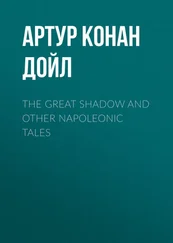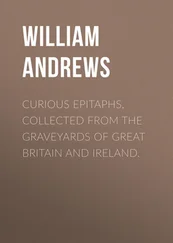1 ...8 9 10 12 13 14 ...26 73 Tiwari, M., Sharma, N.C., Fleischmann, P. et al. (2017). Nanotitania exposure causes alterations in physiological, nutritional and stress responses in tomato (Solanum lycopersicum). Frontiers in Plant Science 8: 633.
74 Tripathi, D.K., Singh, S., Singh, S. et al. (2017). An overview on manufactured nano‐particles in plants: uptake, translocation, accumulation and phytotoxicity. Plant Physiology and Biochemistry 110: 2–12.
75 Van, S.N., Minh, H.D., and Anh, D.N. (2013). Study on chitosan nanoparticles on biophysical characteristics and growth of Robusta coffee in green house. Biocatalysis and Agricultural Biotechnology 2 (4): 289–294.
76 Wang, W.‐N., Tarafdar, J.C., and Biswas, P. (2013). Nanoparticle synthesis and delivery by an aerosol route for watermelon plant foliar uptake. Journal of Nanoparticle Research 15: 1417.
77 White, J.C. and Gardea‐Torresdey, J. (2018). Achieving food security through the very small. Nature Nanotechnology 13: 627.
78 Worrall, E.A., Hamid, A., Mody, K.T. et al. (2018). Nanotechnology for plant disease management. Agronomy 8: 285.
79 Yassen, A., Abdallah, E., Gaballah, M., and Zaghloul, S. (2017). Role of silicon dioxide nano fertilizer in mitigating salt stress on growth, yield and chemical composition of cucumber (Cucumis sativus L.). International Journal of Agricultural Research 12: 130–135.
80 Yousefi, R. and Esna‐Ashari, M. (2017). The effect of micro‐and nanoparticles of silicon on concentration of macro‐and microelements and silicon content of strawberry plant in soilless culture conditions. Journal of Science and Technology of Greenhouse Culture 8 (1): 57–71.
81 Zahra, Z., Arshad, M., Rafique, R. et al. (2015). Metallic nanoparticle (TiO2 and Fe3O4) application modifies rhizosphere phosphorus availability and uptake by Lactuca sativa. Journal of Agricultural and Food Chemistry 63: 6876–6882.
82 Zhang, X., Davidson, E.A., Mauzerall, D.L. et al. (2015). Managing nitrogen for sustainable development. Nature 528: 51–59.
83 Zhu, H., Han, J., Xiao, J.Q., and Jin, Y. (2008). Uptake, translocation, and accumulation of manufactured iron oxide nanoparticles by pumpkin plants. Journal of Environmental Monitoring 10: 713–717.
84 Zulfiqar, F., Navarro, M., Ashraf, M. et al. (2019). Nanofertilizer use for sustainable agriculture: advantages and limitations. Plant Science 289: 110270.
2 Effects of Titanium Dioxide Nanomaterialson Plants Growth
Martin Šebesta1, Illa Ramakanth2, Ondřej Zvěřina3, Martin Šeda4, Pavel Diviš5, and Marek Kolenčík6,7
1 Institute of Laboratory Research on Geomaterials, Faculty of Natural Sciences, Comenius University in Bratislava, Bratislava, Slovakia
2 Department of Chemistry, Rajiv Gandhi University of Knowledge Technologies, Nuzvid, India
3 Department of Public Health, Faculty of Medicine, Masaryk University, Brno, Czech Republic
4 Department of Applied Chemistry, Faculty of Agriculture, University of South Bohemia, České Budějovice, Czech Republic
5 Faculty of Chemistry, Brno University of Technology, Brno, Czech Republic
6 Nanotechnology Centre, VŠB Technical University of Ostrava, Ostrava, Czech Republic
7 Department of Soil Science and Geology, Faculty of Agrobiology and Food Resources, Slovak University of Agriculture in Nitra, Nitra, Slovakia
To date, titanium dioxide (TiO 2) mainly in its nanoforms was found to be one of the most useful and effective materials. Various promising properties of TiO 2nanoparticles (TiO 2NPs) such as its semiconductor and photocatalyst nature and other beneficial characteristics for plants attracted a great deal of attention for their applications in agriculture (Prasad et al. 2014, 2017; Wang et al. 2016; Mattiello et al. 2018; Kolenčík et al. 2019a). Nowadays, a variety of nanomaterials are increasingly used in different sectors including agriculture because of their unique or favorable properties arising from their minuscule size. Nanomaterials are defined as materials which have at least one dimension between1 and 100 nm. The definition includes a subgroup of nanoparticles with a defined size of 1–100 nm in three dimensions (CODATA‐VAMAS Working Group On the Description of Nanomaterials and Rumble 2016; Šebesta and Matúš 2018). This definition is sometimes broadened and includes slightly larger particles that display nanomaterial behavior in organisms (Cox et al. 2016; Kolenčík et al. 2019b).
Engineered TiO 2NPs are synthesized with one of several crystalline structures (most commonly anatase, rutile, or brookite), each of them having unique properties (Macwan et al. 2011). Hydrolysis of titanium salts in an acidic solution is the most commonly used method for the synthesis of TiO 2NPs (Mahshid et al. 2007). Moreover, it was proposed that the structure, size, and shape of TiO 2NPs can be controlled by the use of chemical vapor deposition (Li et al. 2002) or nucleation from sol–gel synthesis (Liao and Liao 2007). TiO 2NPs (and other TiO 2nanomaterials) are often coated with aluminum, silicon, or polymers to adjust their photo‐stability and agglomeration/aggregation (Carlotti et al. 2009; Labille et al. 2010).
Nanomaterials made with TiO 2have broad use in nearly all human activities. They are used in various products like paints, cementitious composites, catalytic coatings, plastics, paper, pharmaceuticals, and sunscreen having applications including packaging, commercial printing inks, other cosmetics, toothpaste, and food (Weir et al. 2012; Li et al. 2018; Baranowska‐Wójcik et al. 2020). Besides, TiO 2nanomaterials are extensively used as photo‐catalysts in many chemical processes at the industrial level (Lan et al. 2013) and also used in photovoltaic cells (Gong et al. 2017). In addition, properties possess by TiO 2nanomaterials are suitable for a variety of environmental and biomedical applications such as water purification, photocatalytic degradation of pollutants, biosensing, antimicrobial coatings, and drug delivery (Mahlambi et al. 2015; Han et al. 2016; Jarosz et al. 2016; Yan et al. 2017; George et al. 2018). In analytical chemistry, TiO 2nanomaterials are used for extraction and detection of elements, and inorganic and organic compounds (Matúš et al. 2009; Hagarová et al. 2012a,b,c; Hagarová et al. 2013; Hagarová 2017, 2018; Gavazov et al. 2019; Nemček and Hagarová 2020).
Along with all these potential uses the applicability of TiO 2NPs in agriculture has been assessed in the past few years and it was observed that these nanoparticles play a pivotal role in the enhancement of plant growth, plant seed protection and enhanced germination, crop disease control (Servin et al. 2015), degradation of pesticides, pesticide residue detection (Aragay et al. 2012), and aforementioned water purification (Kumar and Bansal 2013; Prasad et al. 2014, 2017; Reddy et al. 2017). Considering these facts, the present chapter aimed to explore how the properties and modes of interaction of TiO 2NPs with plants affect the growth, health, and yield of plants and especially crops. Moreover, the properties of TiO 2NPs that affect the biology of plants are discussed. Positive effects of TiO 2NPs are also briefly discussed. In addition, gaps in our understanding are described by proposing four areas of research that need to be studied in the foreseeable future. We believe that the present chapter will definitely help biotechnologists, agronomists, and food technologist to realize the value of TiO 2nanomaterials application.
2.2 Properties of TiO 2NPs Important for Biological Interaction
The methods used for the synthesis can profoundly change the properties of TiO 2NPs that affect their biological interaction. Among the various properties, size and shape of TiO 2NPs, their crystal structure, and surface coating are some of the most important properties found to affect the interaction of nanoparticles with other systems. Furthermore, the above‐mentioned properties also affect the surface area of nanoparticles, as well as their agglomeration/aggregation properties, generation of reactive oxygen species, and their ability to react with cell structures upon contact.
Читать дальше












